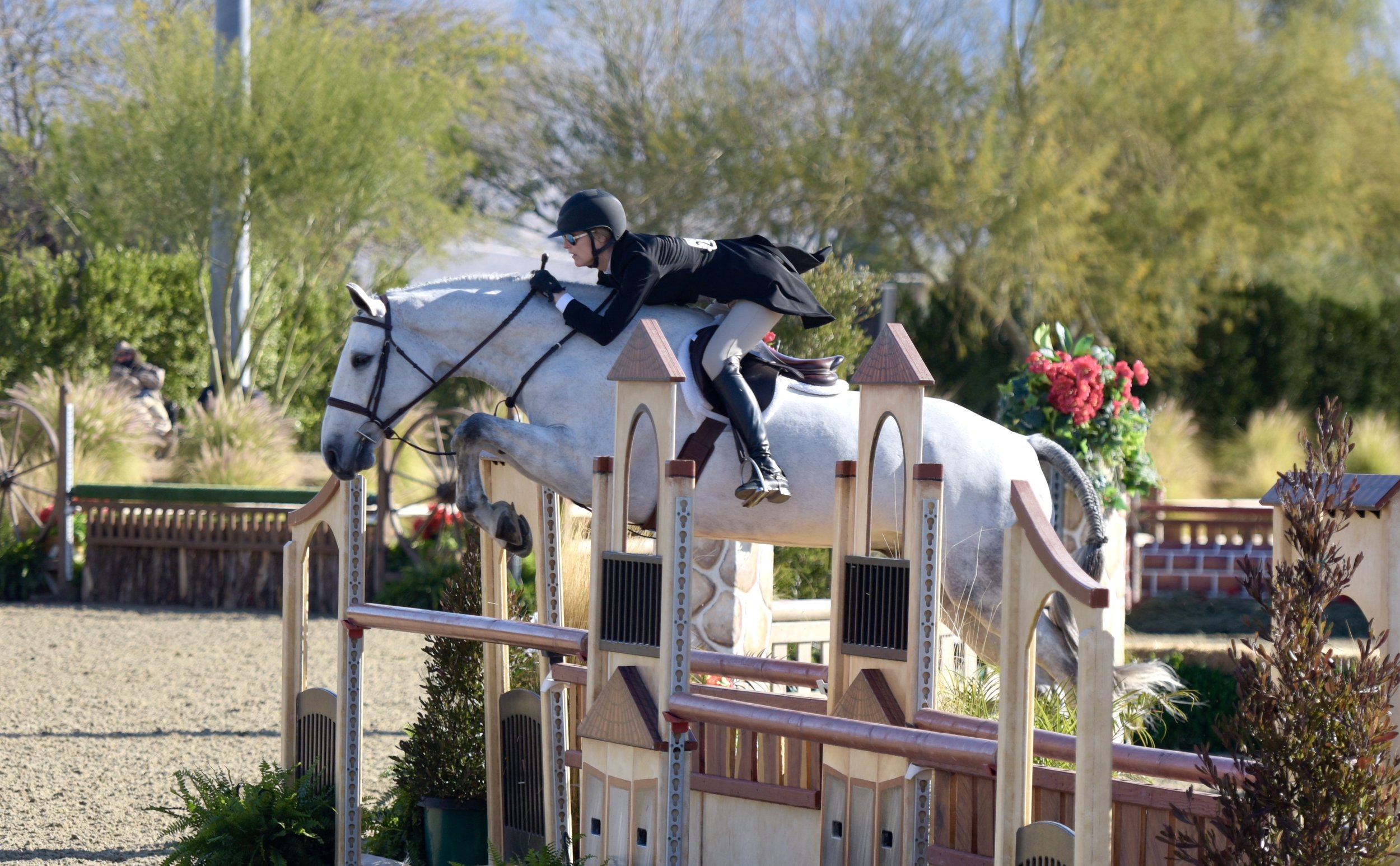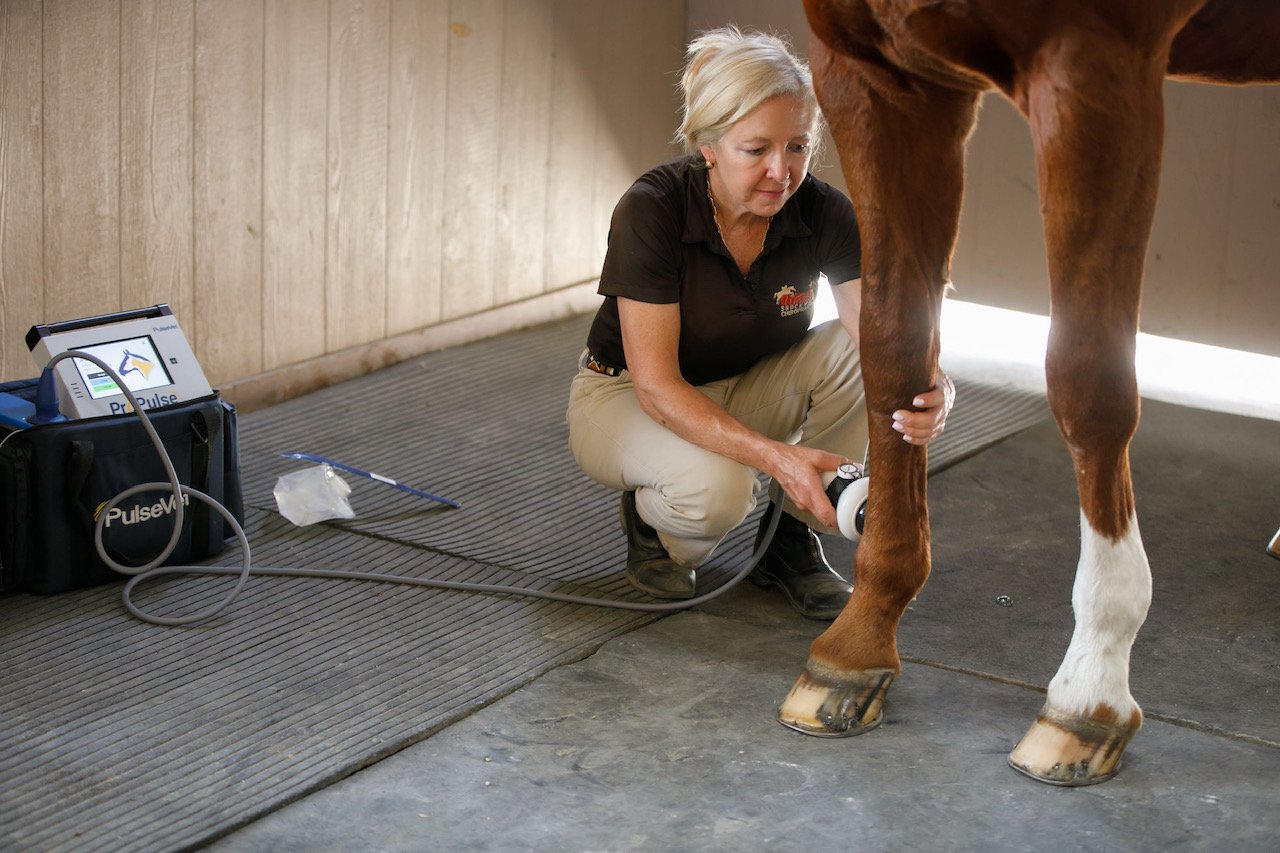
Shockwave Therapy
Benefits to Shockwave Therapy
Non-Invasive Treatment
Shockwave therapy is a non-invasive treatment for orthopedic and soft tissue injuries.
Promotes Fracture Healing
Helps slow cartilage destruction in arthritis and promotes fracture healing by stimulating bone growth.
Increase Blood Flow
It uses high-energy sound waves to stimulate tissue healing and increase blood flow.
Proven Results
Proven effective for acute and chronic injuries, bone and joint conditions, neck and back pain.
Reduce Inflammation
Benefits include reduced inflammation, improved healing of tendons, ligaments, and bone, along with pain relief.
Trusted for Over 25 Years
Used in veterinary medicine for 25+ years, aiding both immediate recovery and long-term care for equine and canine athletes.
Shockwave Therapy for Horses
Unlock the Healing Potential of Shockwave Therapy
-
Stimulating new bone growth
Increasing cell permeability and triggering the release of a cascade of healing and growth factors
Stimulating the release of the animal’s own stem cells and directing those stem cells to the treated area
Promoting the in- growth of new blood vessels (neovascularization)
Stimulating fibroblast formation, which generate new connective tissue
Reducing the activity of mediators involved in cartilage breakdown and the formation of osteoarthritis, interrupting the progression of arthritis
Stimulating osteoblast formation to help stimulate fracture healing
-
Suspensory ligament tears and strains
Suspensory injuries with avulsion fractures
Tendon tears and strains
Osteoarthritis
Collateral ligament injuries
Impar ligament injuries
Deep digital flexor tendon injuries, including those in the hoof
Navicular syndrome
Ringbone
Joint inflammation and pain
Back and neck pain
Muscle tears and strains
Ligament injury repairs
Infected or large wounds
Burns
-
The treatment protocol is tailored to the specific diagnosis of each horse. It varies in the number of shockwaves administered and their energy levels. Most conditions require three sessions spaced 2-3 weeks apart. Severe injuries may need additional treatments. All treatments are conveniently performed at your facility with your horse under mild sedation.
-
Typically, you'll notice a reduction in pain and/or swelling within hours, lasting 2-4 days. Following this, genuine healing occurs over the next two to three weeks.
Explore the benefits of shockwave therapy to aid your horse’s recovery and improve mobility. Contact us to learn how this innovative treatment can make a difference for your horse!
Shockwave Therapy for Small Animals
-
Shockwave therapy has been successfully used to treat a variety of soft tissue and bony issues in small animals, both acute and chronic. These include, but are not limited to:
Hip dysplasia pain
Non-union fractures
Degenerative joint disease
Spondylosis
Lumbosacral pain
Osteoarthritis
Tendon and ligament injuries
Bursitis
Muscle tears and strains
Wounds
Lick granulomas
Neck pain
-
The treatment protocol is tailored to each individual patient. Oakhill collaborates with your regular veterinarian to determine the optimal treatment plan for your pet. Treatment varies in the number and energy of shockwaves administered. Treatment frequency is dependent on the issue being treated, with some conditions requiring only one treatment and others requiring a series of 2-3 treatments, spaced at 2-4 week intervals. Additionally, some pets may benefit from “booster” treatments at regularly scheduled intervals, typically every few months or on an “as needed” basis.
The benefits of shockwave therapy are often long-lasting, providing increased comfort for 6 months to a year or longer.
-
Many animals experience a significant reduction in pain almost immediately. Typically, pain and swelling reduction is noticeable within hours, lasting 2-4 days, followed by a return to near-original status. Over the next two to three weeks, actual healing takes place. Shockwave therapy is an excellent option for animals that cannot tolerate daily anti-inflammatory medication or are difficult to treat daily.
-
In most cases, using the new X-Trode, pets tolerate shockwave therapy very well. In some cases, where there is a recent injury or in the case of an anxious pet, sedation may be needed for the treatment.
Explore the benefits of shockwave therapy to aid your in your pet’s recovery and improve mobility. Contact us to learn how this innovative treatment can make a difference for your pet.
-
TPLO Surgery
Recent research into the use of shockwave therapy after TPLO surgery has shown an improvement in weight bearing post TPLO surgery, a significant improvement in the bone healing at 8 weeks after TPLO surgery, and a significant decrease in ligament thickness after TPLO surgery. These studies have shown that incorporating shockwave therapy into the post operative care after TPLO surgery can lead to significant improvements in comfort and in the overall success of the procedure for your dog.Cauda Equina Syndrome and Lumbosacral Pain
A study evaluating the use of shockwave therapy to treat lumbosacral pain/cauda equina syndrome in dogs found that over 87% of the dogs showed a significant improvement after one shockwave therapy treatment, with the median duration of improvement being 13 months.
Elbow arthritis and shoulder pain
Recent studies have also shown improvement in lameness from elbow arthritis and from shoulder pain with shockwave therapy treatment.
-
PulseVet, in collaboration with leading shockwave physicists, has recently developed the X-Trode, a shockwave therapy probe specifically for small animals.
This new probe flattens the energy distribution curve, which allows the focused shockwave energy to cover a larger volume of tissue with a significantly reduced peak energy, which leads to a much more comfortable treatment for your pet. This has been transformational in providing non-invasive shockwave therapy to pets.
Frequently Asked Questions
-
Shockwaves can be generated in one of three ways: electrohydraulic, electromagnetic, and piezoelectric. Electrohydraulic devices generate the greatest peak energy and largest focal area. The electromagnetic and piezoelectric devices generate less energy and deposit it in a smaller focal area. Electrohydraulic shockwave generators are the only type that generate a true shockwave at all energy settings.
-
Oakhill uses the ProPulse Shockwave machine, manufactured by PulseVet, which generates shockwaves electrohydraulically and is largely considered the “state of the art” in veterinary shockwave machines. Oakhill has the full complement of probes offered, including 4 different probes for equine use, each releasing the shockwaves at different depths facilitating treatment of multiple types of conditions and injuries, as well as the recently released X-Trode, which is designed for comfortable use in small animals.
-
Shockwave therapy is widely used in Europe and other parts of the world in human medicine. It has been used effectively in treating conditions such as tennis elbow, plantar fasciitis (heel pain), rotator cuff injuries, calcifying tendonitis of the shoulder, femoral head necrosis (hip degeneration), non-union fractures, wounds and burns, osteomyelitis (bone infection) with draining tracts, and myofascial pain. Recent research has expanded its potential applications to include treating periodontal disease, infected wounds, and speeding up fracture healing, reducing the risk of non-union fractures. The U.S. Food and Drug Administration has approved Shockwave Therapy for treating plantar fasciitis and tennis elbow that have not responded to six months of conventional therapy.
-
No, there is no treatment that is successful in every case. Shockwave therapy is one of the most exciting therapies to become available to veterinary medicine in quite some time. It is extremely important to have an accurate diagnosis and a clearly defined area of injury in order to direct the shockwave to the appropriate area.
-
Absolutely not. There are several machines currently marketed as shockwave machines that do not generate a true shockwave. They generate what is called a ballistic or radial wave. The physics of this type of wave are completely different from that of a true shockwave. A ballistic or radial wave is created when a projectile is rapidly accelerated by compressed air – it looks like a small jackhammer. The problem with this type of wave is that all of the energy is deposited at the skin, and the energy drops off rapidly as you move away from the skin. The result being that unless the injury is at the skin, the injured area is not receiving the necessary energy to help the healing process. Additionally, since the wave is not focused with this type of machine, the entire area around the treatment site is receiving the wave, which can potentially have harmful effects.
It is also important to recognize that not all focused shockwave machines are equal. There are now some focused shockwave machines on the market that advertise a deeper penetration of the shockwave into the tissue. The problem with these machines is that the focal zone for the release of the shockwave energy is so concentrated, almost like a pinpoint, that there is potential for tissue damage with this type of machine. Additionally, with this type of machine, because the focal zone is so small, there is a much greater likelihood of missing the desired target tissue or injury, thereby rendering the treatment useless or worse.



